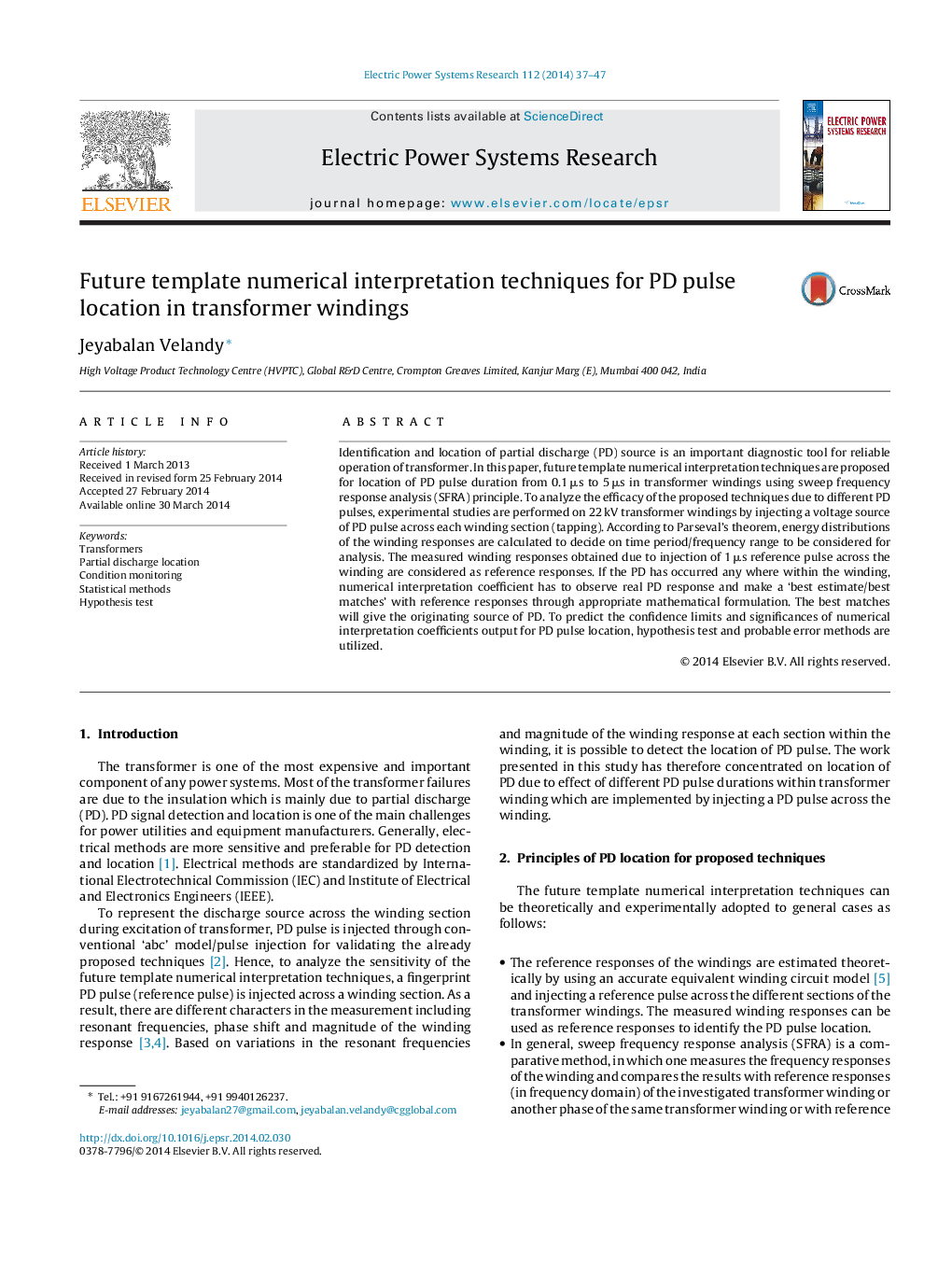| Article ID | Journal | Published Year | Pages | File Type |
|---|---|---|---|---|
| 704548 | Electric Power Systems Research | 2014 | 11 Pages |
•As the any graphical methods do not provide any conclusive evidence for PD pulse location, an attempt has been made for PD location numerically.•The Butterworth band pass filter is utilized to remove the noise in PD responses. The PD pulse duration of 0.1–5 μs is considered.•The proposed techniques are applicable for all type and rating of the transformer and also for uniform and non-uniformly tapped windings.•The proposed techniques can be further extended to assess the mechanical integrity of insulation using SFRA and PD location during impulse test.•The usefulness of the proposed techniques is applicable for voltage and current PD signals.
Identification and location of partial discharge (PD) source is an important diagnostic tool for reliable operation of transformer. In this paper, future template numerical interpretation techniques are proposed for location of PD pulse duration from 0.1 μs to 5 μs in transformer windings using sweep frequency response analysis (SFRA) principle. To analyze the efficacy of the proposed techniques due to different PD pulses, experimental studies are performed on 22 kV transformer windings by injecting a voltage source of PD pulse across each winding section (tapping). According to Parseval's theorem, energy distributions of the winding responses are calculated to decide on time period/frequency range to be considered for analysis. The measured winding responses obtained due to injection of 1 μs reference pulse across the winding are considered as reference responses. If the PD has occurred any where within the winding, numerical interpretation coefficient has to observe real PD response and make a ‘best estimate/best matches’ with reference responses through appropriate mathematical formulation. The best matches will give the originating source of PD. To predict the confidence limits and significances of numerical interpretation coefficients output for PD pulse location, hypothesis test and probable error methods are utilized.
